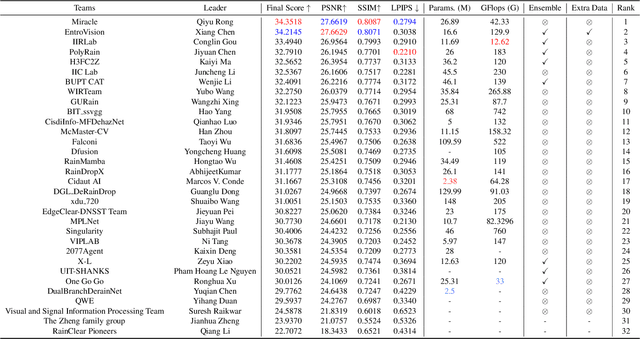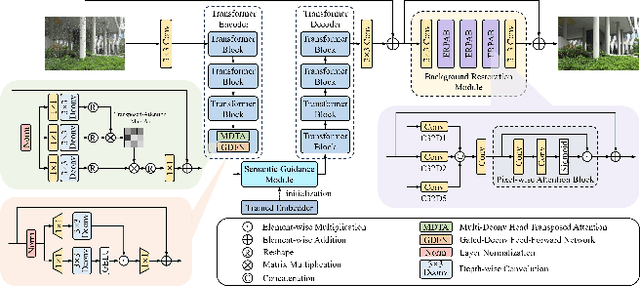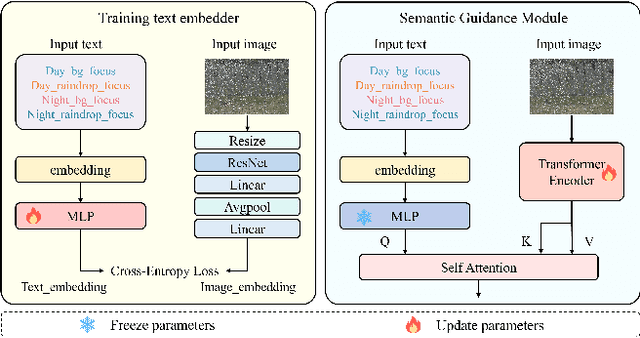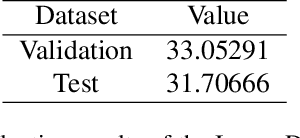Zeyu Xiao
KineST: A Kinematics-guided Spatiotemporal State Space Model for Human Motion Tracking from Sparse Signals
Dec 18, 2025Abstract:Full-body motion tracking plays an essential role in AR/VR applications, bridging physical and virtual interactions. However, it is challenging to reconstruct realistic and diverse full-body poses based on sparse signals obtained by head-mounted displays, which are the main devices in AR/VR scenarios. Existing methods for pose reconstruction often incur high computational costs or rely on separately modeling spatial and temporal dependencies, making it difficult to balance accuracy, temporal coherence, and efficiency. To address this problem, we propose KineST, a novel kinematics-guided state space model, which effectively extracts spatiotemporal dependencies while integrating local and global pose perception. The innovation comes from two core ideas. Firstly, in order to better capture intricate joint relationships, the scanning strategy within the State Space Duality framework is reformulated into kinematics-guided bidirectional scanning, which embeds kinematic priors. Secondly, a mixed spatiotemporal representation learning approach is employed to tightly couple spatial and temporal contexts, balancing accuracy and smoothness. Additionally, a geometric angular velocity loss is introduced to impose physically meaningful constraints on rotational variations for further improving motion stability. Extensive experiments demonstrate that KineST has superior performance in both accuracy and temporal consistency within a lightweight framework. Project page: https://kaka-1314.github.io/KineST/
NTIRE 2025 Image Shadow Removal Challenge Report
Jun 18, 2025Abstract:This work examines the findings of the NTIRE 2025 Shadow Removal Challenge. A total of 306 participants have registered, with 17 teams successfully submitting their solutions during the final evaluation phase. Following the last two editions, this challenge had two evaluation tracks: one focusing on reconstruction fidelity and the other on visual perception through a user study. Both tracks were evaluated with images from the WSRD+ dataset, simulating interactions between self- and cast-shadows with a large number of diverse objects, textures, and materials.
PIG: Physically-based Multi-Material Interaction with 3D Gaussians
Jun 09, 2025Abstract:3D Gaussian Splatting has achieved remarkable success in reconstructing both static and dynamic 3D scenes. However, in a scene represented by 3D Gaussian primitives, interactions between objects suffer from inaccurate 3D segmentation, imprecise deformation among different materials, and severe rendering artifacts. To address these challenges, we introduce PIG: Physically-Based Multi-Material Interaction with 3D Gaussians, a novel approach that combines 3D object segmentation with the simulation of interacting objects in high precision. Firstly, our method facilitates fast and accurate mapping from 2D pixels to 3D Gaussians, enabling precise 3D object-level segmentation. Secondly, we assign unique physical properties to correspondingly segmented objects within the scene for multi-material coupled interactions. Finally, we have successfully embedded constraint scales into deformation gradients, specifically clamping the scaling and rotation properties of the Gaussian primitives to eliminate artifacts and achieve geometric fidelity and visual consistency. Experimental results demonstrate that our method not only outperforms the state-of-the-art (SOTA) in terms of visual quality, but also opens up new directions and pipelines for the field of physically realistic scene generation.
NTIRE 2025 Challenge on Efficient Burst HDR and Restoration: Datasets, Methods, and Results
May 17, 2025



Abstract:This paper reviews the NTIRE 2025 Efficient Burst HDR and Restoration Challenge, which aims to advance efficient multi-frame high dynamic range (HDR) and restoration techniques. The challenge is based on a novel RAW multi-frame fusion dataset, comprising nine noisy and misaligned RAW frames with various exposure levels per scene. Participants were tasked with developing solutions capable of effectively fusing these frames while adhering to strict efficiency constraints: fewer than 30 million model parameters and a computational budget under 4.0 trillion FLOPs. A total of 217 participants registered, with six teams finally submitting valid solutions. The top-performing approach achieved a PSNR of 43.22 dB, showcasing the potential of novel methods in this domain. This paper provides a comprehensive overview of the challenge, compares the proposed solutions, and serves as a valuable reference for researchers and practitioners in efficient burst HDR and restoration.
NTIRE 2025 Challenge on Image Super-Resolution ($\times$4): Methods and Results
Apr 20, 2025Abstract:This paper presents the NTIRE 2025 image super-resolution ($\times$4) challenge, one of the associated competitions of the 10th NTIRE Workshop at CVPR 2025. The challenge aims to recover high-resolution (HR) images from low-resolution (LR) counterparts generated through bicubic downsampling with a $\times$4 scaling factor. The objective is to develop effective network designs or solutions that achieve state-of-the-art SR performance. To reflect the dual objectives of image SR research, the challenge includes two sub-tracks: (1) a restoration track, emphasizes pixel-wise accuracy and ranks submissions based on PSNR; (2) a perceptual track, focuses on visual realism and ranks results by a perceptual score. A total of 286 participants registered for the competition, with 25 teams submitting valid entries. This report summarizes the challenge design, datasets, evaluation protocol, the main results, and methods of each team. The challenge serves as a benchmark to advance the state of the art and foster progress in image SR.
NTIRE 2025 Challenge on Day and Night Raindrop Removal for Dual-Focused Images: Methods and Results
Apr 19, 2025



Abstract:This paper reviews the NTIRE 2025 Challenge on Day and Night Raindrop Removal for Dual-Focused Images. This challenge received a wide range of impressive solutions, which are developed and evaluated using our collected real-world Raindrop Clarity dataset. Unlike existing deraining datasets, our Raindrop Clarity dataset is more diverse and challenging in degradation types and contents, which includes day raindrop-focused, day background-focused, night raindrop-focused, and night background-focused degradations. This dataset is divided into three subsets for competition: 14,139 images for training, 240 images for validation, and 731 images for testing. The primary objective of this challenge is to establish a new and powerful benchmark for the task of removing raindrops under varying lighting and focus conditions. There are a total of 361 participants in the competition, and 32 teams submitting valid solutions and fact sheets for the final testing phase. These submissions achieved state-of-the-art (SOTA) performance on the Raindrop Clarity dataset. The project can be found at https://lixinustc.github.io/CVPR-NTIRE2025-RainDrop-Competition.github.io/.
Event-Enhanced Blurry Video Super-Resolution
Apr 18, 2025Abstract:In this paper, we tackle the task of blurry video super-resolution (BVSR), aiming to generate high-resolution (HR) videos from low-resolution (LR) and blurry inputs. Current BVSR methods often fail to restore sharp details at high resolutions, resulting in noticeable artifacts and jitter due to insufficient motion information for deconvolution and the lack of high-frequency details in LR frames. To address these challenges, we introduce event signals into BVSR and propose a novel event-enhanced network, Ev-DeblurVSR. To effectively fuse information from frames and events for feature deblurring, we introduce a reciprocal feature deblurring module that leverages motion information from intra-frame events to deblur frame features while reciprocally using global scene context from the frames to enhance event features. Furthermore, to enhance temporal consistency, we propose a hybrid deformable alignment module that fully exploits the complementary motion information from inter-frame events and optical flow to improve motion estimation in the deformable alignment process. Extensive evaluations demonstrate that Ev-DeblurVSR establishes a new state-of-the-art performance on both synthetic and real-world datasets. Notably, on real data, our method is +2.59 dB more accurate and 7.28$\times$ faster than the recent best BVSR baseline FMA-Net. Code: https://github.com/DachunKai/Ev-DeblurVSR.
The Tenth NTIRE 2025 Image Denoising Challenge Report
Apr 16, 2025



Abstract:This paper presents an overview of the NTIRE 2025 Image Denoising Challenge ({\sigma} = 50), highlighting the proposed methodologies and corresponding results. The primary objective is to develop a network architecture capable of achieving high-quality denoising performance, quantitatively evaluated using PSNR, without constraints on computational complexity or model size. The task assumes independent additive white Gaussian noise (AWGN) with a fixed noise level of 50. A total of 290 participants registered for the challenge, with 20 teams successfully submitting valid results, providing insights into the current state-of-the-art in image denoising.
The Tenth NTIRE 2025 Efficient Super-Resolution Challenge Report
Apr 14, 2025Abstract:This paper presents a comprehensive review of the NTIRE 2025 Challenge on Single-Image Efficient Super-Resolution (ESR). The challenge aimed to advance the development of deep models that optimize key computational metrics, i.e., runtime, parameters, and FLOPs, while achieving a PSNR of at least 26.90 dB on the $\operatorname{DIV2K\_LSDIR\_valid}$ dataset and 26.99 dB on the $\operatorname{DIV2K\_LSDIR\_test}$ dataset. A robust participation saw \textbf{244} registered entrants, with \textbf{43} teams submitting valid entries. This report meticulously analyzes these methods and results, emphasizing groundbreaking advancements in state-of-the-art single-image ESR techniques. The analysis highlights innovative approaches and establishes benchmarks for future research in the field.
Mamba-based Light Field Super-Resolution with Efficient Subspace Scanning
Jun 23, 2024



Abstract:Transformer-based methods have demonstrated impressive performance in 4D light field (LF) super-resolution by effectively modeling long-range spatial-angular correlations, but their quadratic complexity hinders the efficient processing of high resolution 4D inputs, resulting in slow inference speed and high memory cost. As a compromise, most prior work adopts a patch-based strategy, which fails to leverage the full information from the entire input LFs. The recently proposed selective state-space model, Mamba, has gained popularity for its efficient long-range sequence modeling. In this paper, we propose a Mamba-based Light Field Super-Resolution method, named MLFSR, by designing an efficient subspace scanning strategy. Specifically, we tokenize 4D LFs into subspace sequences and conduct bi-directional scanning on each subspace. Based on our scanning strategy, we then design the Mamba-based Global Interaction (MGI) module to capture global information and the local Spatial- Angular Modulator (SAM) to complement local details. Additionally, we introduce a Transformer-to-Mamba (T2M) loss to further enhance overall performance. Extensive experiments on public benchmarks demonstrate that MLFSR surpasses CNN-based models and rivals Transformer-based methods in performance while maintaining higher efficiency. With quicker inference speed and reduced memory demand, MLFSR facilitates full-image processing of high-resolution 4D LFs with enhanced performance.
 Add to Chrome
Add to Chrome Add to Firefox
Add to Firefox Add to Edge
Add to Edge